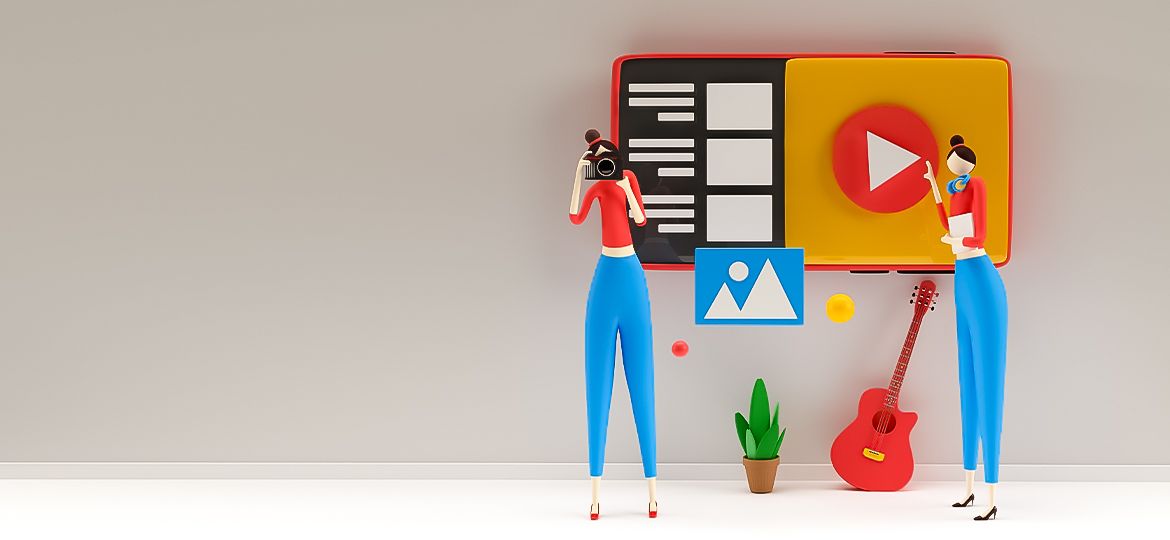
Introduction: If It Doesn’t Move, It Doesn’t Matter
In a world where your audience scrolls faster than they read, motion design isn’t just an enhancement—it’s essential. You’ve got two seconds (or less) to stop the scroll, spark interest, and tell your story. Static visuals still have their place, but motion-first content is what demands attention and drives engagement.
Welcome to the age of Visual Velocity—where brands that move, win.
At PixMagnate, we don’t just design visuals—we engineer movement with meaning. In this blog, we’ll explore why motion design is transforming modern marketing, the science behind its success, and how your brand can move forward—literally and emotionally.
1. Why Motion Beats Static in a Scroll-First World
Let’s be honest: attention is the most precious currency today. Studies show that animated visuals hold attention up to 5x longer than static ones. Why? Because movement is hardwired into our survival instincts. Our brains are trained to track motion—whether it’s a tiger in the bushes or a looping product reveal.
In marketing terms? Motion grabs, guides, and holds attention—something no static banner can match.
SEO Tip: Use phrases like motion design benefits, why animation works in marketing, and motion graphics for attention.
2. The Science of Scroll-Stopping Visuals
Motion isn’t just about catching eyes—it’s about making messages memorable.
Neuroscience shows that people remember up to 80% of what they see and do—but only 20% of what they read. Combine visuals with motion, and you create content that’s cognitively sticky.
Here’s what motion does best:
- Directs focus where you want it (think call-to-action animations)
- Tells a story fast (product journeys, how-tos, explainer loops)
- Creates emotional engagement (through timing, pacing, and sound)
At PixMagnate, we call it “designed momentum”—where visuals, motion, and message align perfectly to move both the eye and the heart.
3. Micro-Animations vs. High-Impact Video—When to Use What
Not all motion is created equal. The real magic happens when you choose the right type of motion for the right moment.
- Micro-Animations
Best for: websites, app interfaces, subtle UI flourishes
Impact: Improve user experience, build brand personality
Examples: Button hovers, icon transitions, scroll-based effects - High-Impact Videos
Best for: ads, social, product launches, brand storytelling
Impact: Grab attention, drive emotion, explain complex ideas
Examples: Motion graphic explainers, animated logo stings, promo reels
Combining both across platforms creates a dynamic brand universe—where everything feels alive, intentional, and on-brand.
SEO Tip: Include terms like micro-animations in UX, motion graphics for ads, and animated brand content.
4. Where to Integrate Motion Design: Web, Social, Ads, and Identity
Motion design doesn’t belong to just one team or platform. Today, it’s embedded across your entire brand ecosystem:
- Web & UX: Smooth loading animations, scroll-based reveals, kinetic typography
- Social Media: Reels, GIFs, animated quote cards, transitions that pop
- Advertising: Dynamic display ads, programmatic video banners, motion-based retargeting
- Brand Identity: Animated logos, motion style guides, branded transitions
The future of branding is in motion—not just in look, but in feel and function. We help brands build motion systems that ensure every moving part works in sync.
5. How PixMagnate Builds Motion Systems That Move Identity Forward
At PixMagnate, we treat motion like a strategic language—not a decoration. Our motion design approach combines:
- Brand-First Strategy: Every animation reflects your tone, values, and market position
- Content Planning: Motion tailored to campaign goals—engagement, explanation, or conversion
- Cross-Platform Thinking: Seamless animations across web, mobile, ads, and video
- Motion Style Systems: Toolkits for consistency in pace, transitions, and visual energy
We don’t just make things move. We make things move people.
Conclusion: In Motion Lies Meaning
The future of marketing isn’t static—it’s kinetic. In the age of Visual Velocity, brands that don’t move risk becoming invisible. Whether you’re building a landing page, launching a campaign, or shaping a brand identity, motion design should be part of your foundation—not an afterthought.
At PixMagnate, we design with motion, emotion, and intention—because a message that moves sticks.
Ready to give your brand momentum?
Let’s talk motion → www.pixmagnate.com

